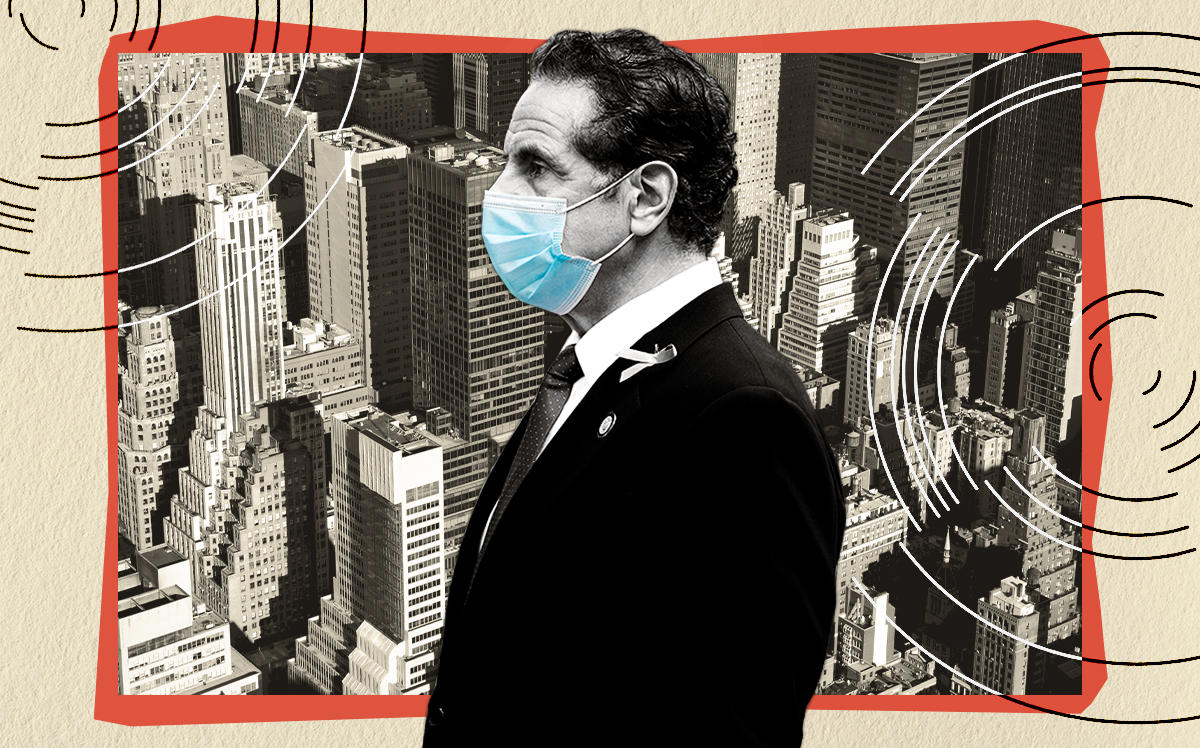Trending
State proposes zoning override for commercial-to-resi conversions
Cuomo’s 2022 budget bill details five-year-plan

For the next five years, certain New York City building owners may be able to get around some local zoning rules to convert properties to residential use.
One of the bills in the state’s proposed 2022 budget elaborates on Gov. Andrew Cuomo’s proposal to incentivize the conversion of commercial buildings into affordable housing. The measure applies to hotels with fewer than 150 rooms and other forms of temporary lodging, as well as class B and C office buildings in Midtown.
If enacted, owners of such properties could avoid local zoning restrictions related to light and air requirements for residential conversions.
“That is going to really enable [conversions] to work a lot faster than any New York City-generated changes,” said Valerie Campbell, a partner at Kramer Levin who focuses on land use issues.
The city’s zoning resolution already allows older office buildings to be converted to residential in certain parts of the city. The state budget proposal frees owners from those restrictions, but puts in place new parameters.
Under the measure, hotels and offices can go residential if the owner agrees to set aside at least 20 percent of the apartments as affordable, or if the property is used as supportive housing through an agreement with the state or city. Currently, developers can get tax-exempt financing if they set aside that percentage of units as affordable through the state-administered 80/20 program.
But the legislation gives owners considerable wiggle room to meet the affordability requirements, while a third option seems to suggest that they could instead contribute to a fund to support creating affordable or supportive housing offsite, or to help prevent homelessness. The state’s Division of Homes and Community Renewal would be charged with determining the “necessary” amount paid by the owner.
Details on the affordability levels of the apartments, or how DHCR will determine what’s deemed “necessary” were not immediately available. Representatives for the agency didn’t immediately return requests seeking comment.
The proposal also lays out geographic restrictions on where these conversions can take place. The legislation covers hotels located in the outer boroughs and within Manhattan between the Financial District and 110th Street, and office buildings within an area bounded by Park and Ninth avenues and 14th and 60th streets.
The area for offices overlaps with the part of Midtown East that was rezoned in 2017. That rezoning was aimed at incentivizing the creation of 6.5 million square feet of new office space over the next two decades. But the rise in office vacancies during the coronavirus pandemic has raised questions about those goals, as well as the future of the city’s central business districts.
Mitch Korbey, partner and chair of Herrick’s land use and zoning group, noted that the state’s proposal doesn’t incentivize new development in the way that rezoning does, but gives property owners another option.
“At the end of the day, this is very positive,” he said. “We ought to be thinking very creatively and flexibly.”
Cuomo pitched commercial-to-resi conversions as part of his State of the State address, following a similar proposal by the Real Estate Board of New York, which estimated that 14,000 residential units could be created from converting just 10 percent of class B and C office space citywide.
The state has previously employed tax breaks to encourage office-to-residential changes in use, including the 421g program. That abatement helped fuel the transformation of commercial buildings in Lower Manhattan in the 90s.
The budget doesn’t appear to include any additional subsidies to incentivize conversions. For that and other reasons, the affordability requirement may not sit well with developers, who are eyeing the looming expiration of Affordable New York in 2022. That state tax break, formerly known as 421a, is provided to developers in exchange for setting aside 25 to 30 percent of units as affordable. Many in the real estate industry have argued that the tax break is essential for multifamily construction in the city.
The measure also doesn’t address the logistical and design challenges of turning offices into living space. Korbey noted that other city zoning restrictions, such as the required distance between buildings on a single zoning lot, are left untouched by the state’s proposal.
“It doesn’t set aside all aspects of residential zoning,” he said.
Still, the prospect of avoiding certain local zoning regulations could prove enticing to some owners of vacant offices and defunct hotels, or make these properties more attractive investments to prospective buyers. The measure could also change as the state works to balance the budget before Apr. 1.




